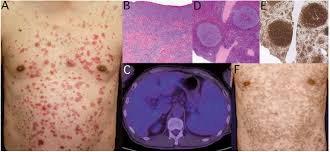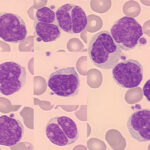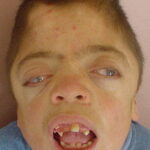Marginal zone lymphoma (MZL) is a slow-growing, rare form of B-cell non-Hodgkin lymphoma (NHL) that arises from the marginal zone of lymphoid tissue. It is categorized into three subtypes: extranodal marginal zone lymphoma (MALT lymphoma), nodal marginal zone lymphoma (NMZL), and splenic marginal zone lymphoma (SMZL). Each subtype has distinct characteristics, clinical presentation, and treatment approaches.

Causes and Risk Factors
The exact cause of MZL remains unclear, but various risk factors have been associated with its development, including:
- Chronic Infections: Helicobacter pylori infection is linked to gastric MALT lymphoma, while hepatitis C and Borrelia burgdorferi infections are associated with other forms.
- Autoimmune Disorders: Conditions such as Sjögren’s syndrome and Hashimoto’s thyroiditis increase the risk.
- Genetic Mutations: Alterations in genes such as BIRC3, NOTCH2, and KLF2 have been identified in MZL cases.
- Environmental Exposure: Prolonged exposure to pesticides, radiation, and industrial chemicals may contribute.
Symptoms of Marginal Zone Lymphoma
Symptoms vary based on the subtype but commonly include:
- Swollen lymph nodes
- Fatigue and weakness
- Abdominal pain or fullness (especially in SMZL due to spleen enlargement)
- Unexplained weight loss
- Night sweats and fever
Diagnosis of Marginal Zone Lymphoma
Diagnosing MZL involves a series of laboratory and imaging tests, including:
- Blood Tests: To assess abnormal white blood cell levels.
- Lymph Node Biopsy: Examining tissue samples for malignant cells.
- Bone Marrow Aspiration: Detecting bone marrow involvement.
- Imaging Tests: PET and CT scans help determine the disease’s extent.
- Flow Cytometry & Immunophenotyping: Identifying specific lymphoma cell markers.
Treatment Options
1. Watchful Waiting
For asymptomatic, slow-progressing cases, monitoring without immediate treatment is an option.
2. Radiation Therapy
Effective for localized MZL, especially in early-stage extranodal MALT lymphoma.
3. Chemotherapy
Used in advanced cases, common drugs include:
- Bendamustine
- Chlorambucil
- Rituximab (monoclonal antibody therapy)
4. Targeted Therapy
Newer treatments focus on specific cancer cell pathways:
- Bruton Tyrosine Kinase (BTK) Inhibitors: Ibrutinib, Zanubrutinib
- PI3K Inhibitors: Idelalisib
5. Stem Cell Transplant
Considered for aggressive or relapsed cases, using autologous or allogeneic stem cells.
Prognosis and Survival Rate
MZL has a favorable prognosis, with a 5-year survival rate ranging between 70-90% depending on the subtype and disease stage. Early diagnosis and appropriate treatment significantly improve outcomes.
Marginal zone lymphoma is a manageable yet complex condition requiring accurate diagnosis and tailored treatment strategies. Advances in targeted therapies and immunotherapy continue to enhance patient outcomes.

